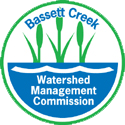News
Road Salt: Less is More
Mon, Jan 29, 2018By mid-winter in Minnesota, roadways, sidewalks, and cars all sport a veneer of road salt. From home-owners to professional salt applicators, cautious Minnesotans don’t just use the recommended 1-3 cups of sodium chloride per 1,000 feet of pavement to get rid of ice, they over-salt. On parking lots and sidewalks, piles of de-icing salt collect from excess application.

This salt becomes pollution that is permanent, says Sue Nissen, a member of Minnesota’s StopOverSalting working group. “There is no feasible way to remove chloride once it dissolves in water. Combine that with the damage salt does to the environment, future drinking water supplies, and infrastructure — the cost of chloride pollution is enormous,” she says.
That’s what got Nissen to skip church one day. Shocked at the caked road salt she saw on the parking lot, she and her husband began chipping. Two and a half hours later, with the help of church youth group members, they’d gotten rid of most of it.
“Drive around many parking lots; you’ll be sick to your stomach,” says this water sports devotee who spent summers — ironically — boating and swimming in Clear Lake, Iowa. “With the next rainfall or snowmelt, everything from the parking lot will be in lakes and rivers, even in groundwater.”

Well-intentioned people think that if a little salt helps, more is better. “It’s just a habit,” says Nissen. “We think we’re doing the right thing.”
Furthermore, commercial applicators often base their fees on the amount of road salt they apply — a practice that works against its more judicious application.
Road Salt Overuse Consequences
These road salt practices come at a tremendous cost to the waterways and infrastructure. As Nissen says, (wearing a teaspoon around her neck) it takes just a teaspoon of salt to permanently pollute five gallons of water. At that level, chloride is toxic to freshwater fish and other aquatic life. Since road salt use increased in the 1990s, chloride levels in streams in the northern U.S. have doubled.
In the metro area, 19 lakes, 16 streams, and four wetlands are considered permanently impaired. Statewide, 30% of wells show elevated levels of chloride. Already, drinking water in Madison, Wis. has a salty taste.
And there are no viable treatment options for over-salinated waterbodies.
New Road Salt Legislation Garners Support

Fortunately, Nissen is not alone in her concerns. Since August, a devoted volunteer group of trained Master Water Stewards (Randy Holst, Joe Knaeble, Walter Levesque, and Louann Waddick) have joined efforts as the StopOverSalting (SOS) water quality working group.
Motivated by their awareness that Minnesota’s waterways and wells are rapidly becoming permanently and irreversibly polluted, SOS is supporting limited liability legislation that will reduce over-salting. First introduced during the 2016 legislative session, and introduced again in 2017 as HF 1016, the hope is that the bill will be passed in the next legislative session beginning in February.
“We saw an opportunity that would benefit both clean water and business,” says Nissen. “Commercial applicators face marketplace dynamics that make it difficult for them to use salt-reduction practices for fear of increased liability.”
So the legislation is designed to protect commercial applicators from “slip and fall” and property damage lawsuits. It would provide liability exemption for those who voluntarily participate in “Smart Salting” applicator training through the Minnesota Pollution Control Agency, become certified, and document their practices.
Building on legislation that passed in New Hampshire (in 2013) and similar legislation that passed in Illinois (in 2016), SOS members have been calling on legislators, talking with watershed districts, and advocating to businesses, public safety entities, and clean water associations. Multi-partisan support for this initiative is growing, and legislators in both houses are interested in authoring a bill in 2018. “Now we are working with a diverse coalition of business, clean water and government in favor that this idea,” says Nissen.
Next Steps
While the bill is gaining public and legislative support, Nissen—a former teacher—is especially interested in having younger generations take up the cause.
As she says, much awareness-raising remains. “People don’t realize that run-off goes directly into groundwater and local waterways, carrying the road salt we use with it. It doesn’t go through a water treatment plant.”
She underscores that “We need a culture change in Minnesota sooner rather than later because there are no do-overs on this topic. Once the chloride is dissolved in water, it’s there forever.”
To contact your legislators on this issue, click here.
For more on using salt wisely, check out Clean Water MN’s page on sidewalk salt.
For your reference, print this tipsheet on proper road salt usage.

